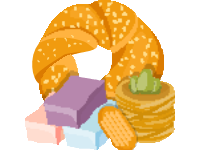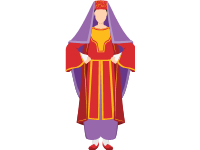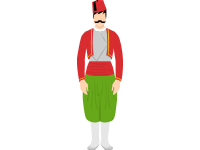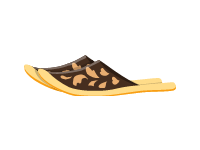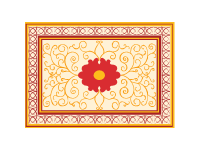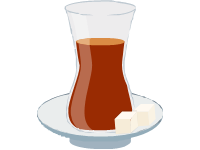| |
Side is a city on the southern Mediterranean coast of Turkey. It includes the modern resort town and the ruins of the ancient city of Side, one of the best-known classical sites in the country. It lies near Manavgat and the village of Selimiye, 78 km from Antalya in the province of Antalya.
It is located on the eastern part of the Pamphylian coast, which lies about 20 km east of the mouth of the Eurymedon River. Today, as in antiquity, the ancient city is situated on a small north-south peninsula about 1 km long and 400 m across. The great ruins are among the most notable in Asia Minor. They cover a large promontory which a wall and a moat separate from the mainland. During medieval times, the wall and moat were repaired and the promontory houses a wealth of structures.
There are colossal ruins of a theatre complex, the largest in Pamphylia, built much like a Roman theatre that relies on arches to support the sheer verticals. The Roman style was adopted because Side lacked a convenient hillside that could be hollowed out in the usual Greek fashion more typical of Asia Minor. The theatre is less well-preserved than the theatre at Aspendos, but it is almost as large, seating 15,000–20,000 people. With time and the shifting of the earth, the scaena wall has collapsed over the stage and the proscenium is in a cataract of loose blocks. It was converted into an open-air sanctuary with two chapels during Byzantine times (5th or 6th century).
| |
Baklava is a rich, sweet dessert pastry made of layers of filo filled with chopped nuts and sweetened and held together with syrup, frosting or honey. It is characteristic of the cuisines of Turkey, Egypt, Iraq, Levant and the broader Middle East, along with South Caucasus, Balkans, the Maghreb and Central Asia.
| |
Sultan Ahmed Mosque, also known as the Blue Mosque, is an Ottoman-era friday mosque located in Istanbul, Turkey. A functioning mosque, it also attracts large numbers of tourist visitors. It was constructed between 1609 and 1616 during the rule of Ahmed I. Its Külliye contains Ahmed's tomb, a madrasah and a hospice. Hand-painted blue tiles adorn the mosque’s interior walls, and at night the mosque is bathed in blue as lights frame the mosque’s five main domes, six minarets and eight secondary domes. It sits next to the Hagia Sophia, the principal mosque of Istanbul until the Blue Mosque's construction and another popular tourist site. The Sultan Ahmed Mosque has five main domes, six minarets, and eight secondary domes. The design is the culmination of two centuries of Ottoman mosque development. It incorporates many Byzantine elements of the neighboring Hagia Sophia with traditional Islamic architecture and is considered to be the last great mosque of the classical period. The architect, Sedefkâr Mehmed Ağa, synthesized the ideas of his master Sinan, aiming for overwhelming size, majesty and splendor. The upper area is decorated with approximately 20,000 hand-painted glazed ceramic in 60 different tulip patterns. The lower stories are illuminated by 200 stained glass windows. The mosque is preceded by a forecourt with a large fountain and special area for ablution. An iron chain hangs in the court entrance on the western side. Only the Sultan was allowed to ride into the mosque horseback, and he would need to lower his head to not hit the chain, a symbolic gesture ensuring the humility of the ruler before Allah
By way of his works he left a decided mark on Istanbul. The square on which the Sultan Ahmed Mosque is situated became known as Sultanahmet. This mosque can be considered the culmination of his career. Mehmed Agha, who was the last student of Mimar Sinan, had completed his mission by adding his brighter, colorful architectural style to that of his master teacher. At its lower levels and at every pier, the interior of the mosque is lined with more than 20,000 handmade İznik style ceramic tiles, made at İznik (the ancient Nicaea) in more than fifty different tulip designs. The tiles at lower levels are traditional in design, while at gallery level their design becomes flamboyant with representations of flowers, fruit and cypresses. The tiles were made under the supervision of the Iznik master. The price to be paid for each tile was fixed by the sultan's decree, while tile prices in general increased over time. As a result, the quality of the tiles used in the building decreased gradually.
The upper levels of the interior are dominated by blue paint. More than 200 stained glass windows with intricate designs admit natural light, today assisted by chandeliers. On the chandeliers, ostrich eggs are found that were meant to avoid cobwebs inside the mosque by repelling spiders. The decorations include verses from the Qur'an, many of them made by Seyyid Kasim Gubari, regarded as the greatest calligrapher of his time. The floors are covered with carpets, which are donated by the faithful and are regularly replaced as they wear out. The many spacious windows confer a spacious impression. The casements at floor level are decorated with opus sectile. Each exedra has five windows, some of which are blind. Each semi-dome has 14 windows and the central dome 28 (four of which are blind). The coloured glass for the windows was a gift of the Signoria of Venice to the sultan.
| |
A cezve is a small long-handled pot with a pouring lip designed specifically to make Turkish coffee. It is traditionally made of brass or copper, occasionally also silver or gold. In more recent times cezveler are also made from stainless steel, aluminium, or ceramics.
| |
The Fez, also called Tarboosh, is a felt headdress in the shape of a short cylindrical peakless hat, usually red, and sometimes with a tassel attached to the top. The name 'Fez' refers to the Moroccan city of Fez (capital of the Kingdom of Morocco until 1927), where the dye to colour the hat was extracted from crimson berries. The modern fez owes much of its popularity to the Ottoman era.
| |
The goblet drum (also chalice drum, tarabuka, tarabaki, darbuka, derbake, debuka, doumbek, dumbec, dumbeg, dumbelek, tabla, tablah, tableh, toumperleki, tumbak, or zerbaghali, is a single head membranophone with a goblet shaped body used mostly in Egypt & Saudi Arabia, also in parts of the Middle East, North Africa, South Asia, and Eastern Europe.The African djembe-wassolou is also a goblet membranophone. This article focuses on the Eastern and North-African goblet drum.
| |
Turkish delight or lokum is a family of confections based on a gel of starch and sugar. Premium varieties consist largely of chopped dates, pistachios, hazelnuts or walnuts bound by the gel; traditional varieties are often flavored with rosewater, mastic, Bergamot orange, or lemon. The confection is often packaged and eaten in small cubes dusted with icing sugar, copra, or powdered cream of tartar to prevent clinging. Other common flavors include cinnamon and mint. In the production process, soapwort may be used as an emulsifying additive.
The origin of the confection is not precisely known, but the candy is known to have been produced in Turkey as early as the late 18th century.
|
|
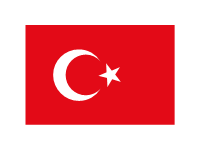



.png)

